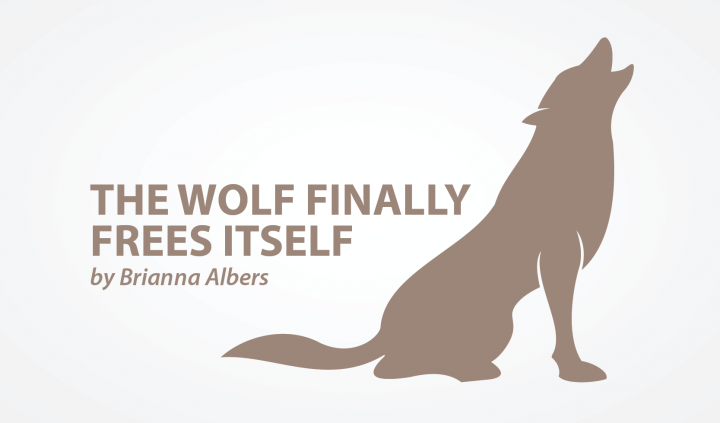Fumbling Through the Dark: Navigating Adulthood with SMA

I was recently asked about resources in the SMA community — what’s available, but also what’s missing and what we would most benefit from.
Before I started this column, I didn’t really have much contact with the community. I went to MDA camp a couple of times and was able to stay in touch with some people I met there, but overall, I wasn’t “plugged in,” which is probably why the question took me by surprise.
I wanted to contribute something to the conversation, so I took some time to reflect on my engagement with the community.
I couldn’t pinpoint why it took me so long to get plugged in. I enjoyed MDA camp. As someone in a wheelchair, I can’t verbalize how important it was for me to be surrounded by people in similar situations. I’ll never forget a party I attended my second and final year of camp.
It was a costume party, so I was decked out in flannel and a cowboy hat. There were lights and music, and I followed the crowd to the dance floor, not really sure how to dance in my wheelchair, but knowing I was supposed to.
It took me a while to get into it, but once I did, that night was one of inexplicable freedom. For the first time in my life, I was in my body, ignorant of everything that wasn’t a feeling of being alive.
At the same time, I couldn’t help but feel that something was off. I’d never been surrounded by that many wheelchairs, and the part of my brain that was desperate to be normal struggled to make peace with it.
MDA camp was its own little world, cushioned by trees and lakes, with nurses winding through the lunchroom to ask about bowel movements, and I kept coming back to that feeling of separateness. I could tape a hockey stick to the insides of my thighs and pretend at playing hockey. That kind of thing was normal at camp, just like BiPAPs, oximeter probes, and formula boxes were normal, but there was a world outside the campground, and it was that world I wanted to live in.
Normalcy is a big deal when you’re a teenager, and as a highly sensitive person, I was hyperaware of the world and its reaction to me. I wanted to fit in. To my adolescent brain, MDA camp was the antithesis of fitting in. So I withdrew. I waffled my way through the late 2000s, alienated and cut off and hopelessly abnormal.
I tried to put that experience into words and found it a struggle. It wasn’t just that I wanted to be normal. It was that, as an SMA patient, I’d grown up with the expectation that, one way or another, I was going to die.
Doctors gave me nine years to live, so I spent those years being a kid. I watched Disney movies and zipped around the playground and labored grumpily on multiplication tables. But then it was 2008 and I was 13 years old, and no one knew what to do with me. I was alive! It was a miracle! And exactly no one was prepared for it.
I think a lot of SMA patients can relate to that. We go through life expecting to die. If we’re lucky enough to survive, we’re faced with the fantastical possibility of living a life we didn’t plan for, a life we don’t know how to live. Suddenly, without warning, we’re adults!
Everything we learned as children, while pertinent, is less applicable than it was when we were middle schoolers. We can distinguish the flu from pneumonia, we can navigate the chaos that is health insurance, but can we get a job? Can we build a network? Can we thrive as adults — albeit disabled adults — in the 21st century?
I like adulthood. It’s new and exciting and rife with possibilities. It’s also stressful — for everyone, but especially for folks like me who are making things up as they go along.
I’m a 23-year-old graduate student who’s stuck in her family’s basement. My parents are my caregivers. Boundaries are essential in my kind of situation, but there’s no blueprint, no tried-and-true method for that precarious blend of autonomy and dependence. It’s unexplored territory, which means I’m more or less fumbling through the dark.
We’re two weeks into our remodel. Our living room is full of my parents’ furniture: armoires and cedar chests and chairs of impressive variety. There’s dust everywhere, and the pink fluff of the insulation peeks between support beams. Change is in the air just as much as spring is. I graduate in a year, and after that, who knows? I certainly don’t. But there’s a strange kind of thrill to it, the chaos of building a life. The future is mine. All I have to do is forge ahead into something beautiful.
***
Note: SMA News Today is strictly a news and information website about the disease. It does not provide medical advice, diagnosis, or treatment. This content is not intended to be a substitute for professional medical advice, diagnosis, or treatment. Always seek the advice of your physician or other qualified health provider with any questions you may have regarding a medical condition. Never disregard professional medical advice or delay in seeking it because of something you have read on this website. The opinions expressed in this column are not those of SMA News Today, or its parent company, Bionews Services, and are intended to spark discussion about issues pertaining to spinal muscular atrophy.









Leave a comment
Fill in the required fields to post. Your email address will not be published.